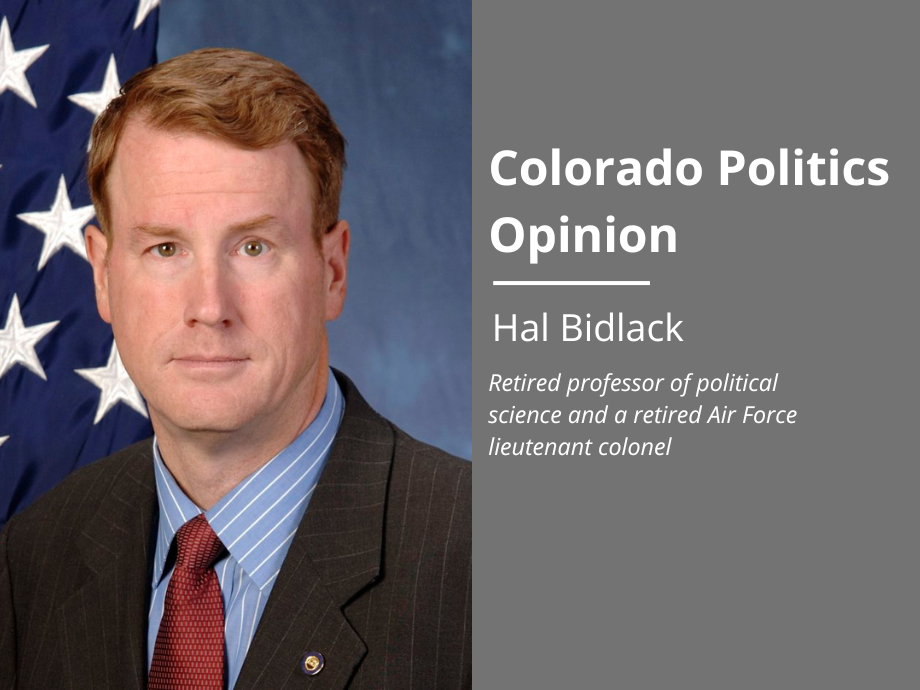Are there ever safe spaces? | BIDLACK


For decades, if you wanted to start an argument, all you had to do was find a group of people and yell something about gun control. It wouldn’t matter if you were pro or anti, the mere thought of gun control was and still is enough to set lots of folks off on wild tirades of rage and indignity.
Frankly, I rather wish the Founders of the nation had been a bit clearer on what the actual “Founder’s intent” was when it came to fire arms. There are many wonderful books about the Constitutional Convention and the reasoning behind the Bill of Rights (BoR), but there is little universal agreement back then on even the need for a BoR.
Stay up to speed: Sign up for daily opinion in your inbox Monday-Friday
Federalists, like George Washington and Alexander Hamilton, believed the listing of specific rights to be superfluous, and even dangerous, while others, chiefly Madison and his buddy Jefferson, believed the BoR to be vital to protect future generations and their basic freedoms. When I perform as Hamilton, as I’ve done for more than 25 years (cough… HamiltonLives.com… cough), I make a rather cogent and powerful argument against the Bill of Rights, much to the shock of much of the audience.
So, BoR or no BoR? Well, as it turns out, both views are correct. There are parts of the BoR, such as the First Amendment, that have proven to be absolutely vital to American freedom. Others, like the Third Amendment, have clearly been overtaken by time and are no longer relevant (you are not too worried about soldiers being placed in your home against your will for housing, and you have to feed them, are you?), and the Seventh Amendment, by stating citizens have a right to a jury trial when the “value in controversy” exceeds $20, is also quite dated. Back in 1787, that was a large amount of money, and the Founders wanted you to have the right to a jury trial when the amount in question was significant. In today’s dollars, that $20 from 1787 is roughly $667 today, quite a different threshold for a jury trial, had the BoR not locked in an ancient and now tiny amount.
And so it is with the Second Amendment, in that there is much debate about who, in the views of the Founders, should be able to have weapons. An initial version of it stated “A well-regulated Militia composed of the body of the people trained to arms, being necessary to the security of a free state, the right… etc.” In that version, you’d have to be a trained militia member to have a gun at home.
There was general agreement there were two basic reasons why citizens should be able to have guns. The first was to have an armed citizenry that could be called to action to repel an invasion from Europe and the second (and far more controversial) was to bring down, through armed insurrection, a government that has turned hostile to liberty.
Both those reasons are invalid today.
We don’t fear any European nation’s ability or interest in invading, and the domestic reason would require the citizenry to have weapons able to defeat the U.S. military. I, for one, do not want my nutty neighbor to have an anthrax cannon, nor should my goofy uncle have a flame thrower. The reasons the Founders supported gun rights at all are essentially void in today’s political reality (and if you remain one of those who wants to have guns enough to overthrow the legitimately elected government of the U.S., well, that’s an entirely different discussion, involving the word “treason,” but let’s not go there, OK?).
Today we have a relatively heavily armed citizenry, especially on a global scale. There are more guns in the U.S. than there are people (120 guns for every 100 people), but remarkably, roughly half of the privately owned guns are owned by a mere 3% of the U.S. adult population.
Most gun owners, I suspect, own more than one. I have several handguns (how many, exactly, isn’t your concern as long as I remain lawful) and a Brown Bess musket. And I have a concealed carry permit. My thinking is that as a former military cop, I’ve had specialized training that might render me able to provide a public service in a crime or other violent situation.
All this, dear reader, because I read a recent Colorado Politics story about a modified state Senate bill, SB24-131, which discusses the proposed bill’s limitation on carrying guns in certain places. Now, if you are either a “no guns anywhere ever” or a “any gun, any time, any place” kind of person, you can just stop reading now, as those extreme positions do little other than tick people off. But for the reasoned middle (and, I think, vast majority of Coloradans), it is entirely reasonable to decide when and where restrictions on guns make sense.
For example, we remember Columbine, and I would hope any bill that would, say, allow high school students over 18 to carry guns in school would be seen as dangerous nonsense. But what are the places where guns shouldn’t be allowed. Common sense would suggest the halls of government are a place where guns should only be carried by cops. You may recall our national embarrassment, U.S. Rep. Lauren Boebert, declaring shortly after entering Congress she was going to carry her Glock (I have a Glock, it’s a good gun) in D.C. in defiance of local ordinances and even on Capitol Hill. Think about that for a bit…
SB24-131 looks to modify and clarify what some of these sensitive spaces are. That’s a good idea. The state Capitol is one such zone, and history has proven this restriction necessary. The bill also prohibits guns in public parks, courthouses, schools, banks and a few other places. Legislators are now debating which areas to keep, which to get rid of, and presumably, which, if any, to add. This is actually great, in that it is another example of government actually working and doing the people’s business. You may agree with the eventual legislative outcome, or you may be enraged by it. But that is what happens in a democracy – or more precisely, a republic, wherein we elect delegates to look after our interests.
The Founders were smart folks, but they, like everyone, were bound by the time in which they lived. A weapon of mass destruction to them was a cannon, and the muskets carried by the troops were Brown Bess’ that took an expert 20 seconds to reload after firing a single shot. Today’s modern weapons are far faster and far more deadly.
And unfortunately, today’s modern military weapons, especially assault rifles, are finding their way into the hands of people who should never own such destructive capacity. As an Air Force cop, I was told that the ballistic plate in my Kevlar vest would protect me from the first shot fired at me by such a high-velocity weapon. The plate would then shatter, and good luck to me after that. We don’t need such weapons in the hands of the wrong people, but that is a tough sell to the far-right gun folks.
But perhaps we can agree on places that should be gun free? SB24-131 is a step in that direction, and I hope the bill gets a thorough vetting and ends up on Gov. Jared Polis’s desk for signature.
Stay tuned.
Hal Bidlack is a retired professor of political science and a retired Air Force lieutenant colonel who taught more than 17 years at the U.S. Air Force Academy in Colorado Springs.







